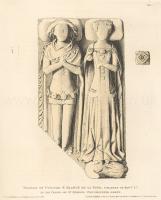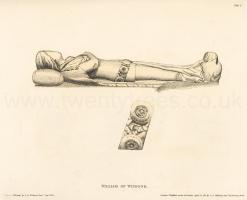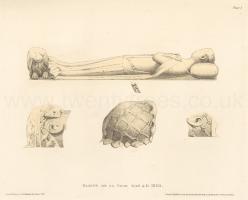Text this colour links to Pages. Text this colour links to Family Trees. Place the mouse over images to see a larger image. Click on paintings to see the painter's Biography Page. Mouse over links for a preview. Move the mouse off the painting or link to close the popup.
All About History Books
The Chronicle of Abbot Ralph of Coggeshall describes the reigns of Kings Henry II, Richard I, John and Henry III, providing a wealth of information about their lives and the events of the time. Ralph's work is detailed, comprehensive and objective. We have augmented Ralph's text with extracts from other contemporary chroniclers to enrich the reader's experience. Available at Amazon in eBook and Paperback.
Cote Hardie is in General Words.
Cote Hardie. A mid to late 14th century unisex garment tailored to fit the torso and arms, usually with a row of buttons down the front as well as down each fitted sleeve from the elbow to the wrist. Women's coathardies trailed on the floor, but those for men could be cut very short.
Effigy of William of Windsor and Blanche de la Tour. EDWARD gave another of his sons by Philippa the name of William, who died so young that nothing more is known of him than the place of his birth, as affixed to his name, and that he was buried at Westminster, in the chapel of St. Edmund [Map], in the abbey church. In the same tomb are also deposited the remains of Blanch de la Tour, their third daughter, so called from her birthplace, the Tower of London [Map]. She was born and died in 1340. Their effigies in alabaster, scarcely eighteen inches in length, are placed on an altar-tomb. Sandford says that an inscription on brass, which had been affixed on the monument, was not extant in his time. The costume of the male figure much resembles that of William of Hatfield. The cote hardie of the female, flanches, jewelled stomacher, girdle, cordon and clasps of the mantle, are worthy attention.
Details. Plate 1. One of the fermails of the Princess's mantle. Plate II. Ornaments on the Prince's girdle. Plate III. Details of the Princess's circlet and reticulated head-dress.



Effigy of Joam Burwaschs, Lady Mohun. The attire of the Lady Mohun presents us with an example of the fret or reticulated coiffure adopted by court ladies of the fourteenth century; and of the cote hardie, which appears to have been a vestment fitting close to the body, leaving the neck bare, and became much in vogue with the ladies towards the latter end of the fourteenth century. The wimpled attire of Aveline Countess of Lancaster will shew how chary they were of their charms in the preceding age. The wimpled costume seems, indeed, to have been borrowed from the females of the East. Mr. Charles Stothard relates a humorous anecdote of a damsel who wore the cote hardie in one of his original letters inserted in the Memoir of his Lifea.
Details. Plate 1. Jewelled lace on the hips of the cote hardie. Plate II. 1. Top of the coiffure. 5. Portion of the circlet enlarged. 3. Reticulation of the coiffure. 4. Pattern on the cote hardie.
Note a. Memoirs including Original Letters, &c. of C. A. Stothard, F. S. A. by Mrs. Charles Stothard. London, 3823, p. 331.


Introduction. The cote-hardie, like the juste-au-corps, was, we think, a close-bodied vest. Perhaps it derived its name from leaving the neck and bosom bare. Mr. Stothard says, "it was a summer-dress with ladies towards the end of the fourteenth century, and tells the following anecdote in relation to it: 'A certain nobleman had two daughters, but one was fairer then the other. A gallant knight, who had heard the fame of her beauty, asked and obtained her father's leave to woo her. The day was fixed; the knight arrived. When the damsels appeared, the plain sister came dressed in the order of the season; but the fair one, wishing to outvie her, and to show her charms to the best advantage, wore the cote-hardie, which made her so cold, and her nose looked so red and blue, that the knight could not fancy her beauty; so he wooed and wedded the other maid.'